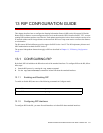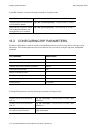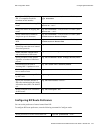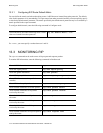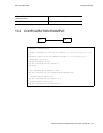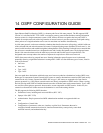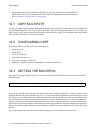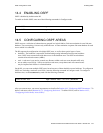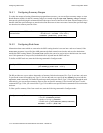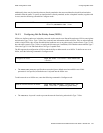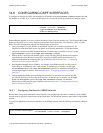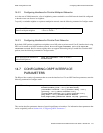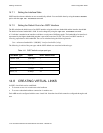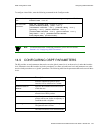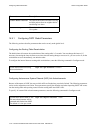
Riverstone Networks RS Switch Router User Guide Release 8.0 14-3
OSPF Configuration Guide Enabling OSPF
14.4 ENABLING OSPF
OSPF is disabled by default on the RS.
To enable or disable OSPF, enter one of the following commands in Configure mode.
14.5 CONFIGURING OSPF AREAS
OSPF areas are a collection of subnets that are grouped in a logical fashion. Each area maintains its own link state
database. The area topology is known only within the area. A router maintains a separate link state database for each
area to which it is connected.
The RS supports the configuration of multiple OSPF areas, as well as three special types of areas:
•
backbone - The backbone is responsible for distributing routing information between non-backbone
areas. OSPF areas communicate with other areas via the backbone area. The OSPF area backbone
contains all area border routers (ABRs).
•
stub - A stub area is not used as a transit area. Routers within a stub area route internal traffic only.
•
not-so-stubby area (NSSA) - NSSAs are similar to stub areas, except that certain AS external routes
may be imported into NSSAs in a limited fashion.
On the RS, you can create multiple OSPF areas, but at least one of them should be an area backbone. To configure an
OSPF area, including a stub area or an NSSA, enter the following command in Configure mode. To configure a
backbone area, use the
backbone
keyword with the following command.
After you create an area, you can set its parameters as described in Section 14.9, "Configuring OSPF Parameters." To
define a stub area, refer to Section 14.5.2, "Configuring Stub Areas." To define NSSAs, refer to Section 14.5.3,
"Configuring Not-So-Stubby Areas (NSSA)."
Enable OSPF.
ospf start
Disable OSPF.
ospf stop
Create an OSPF area.
ospf create area
<area-num>
|backbone



